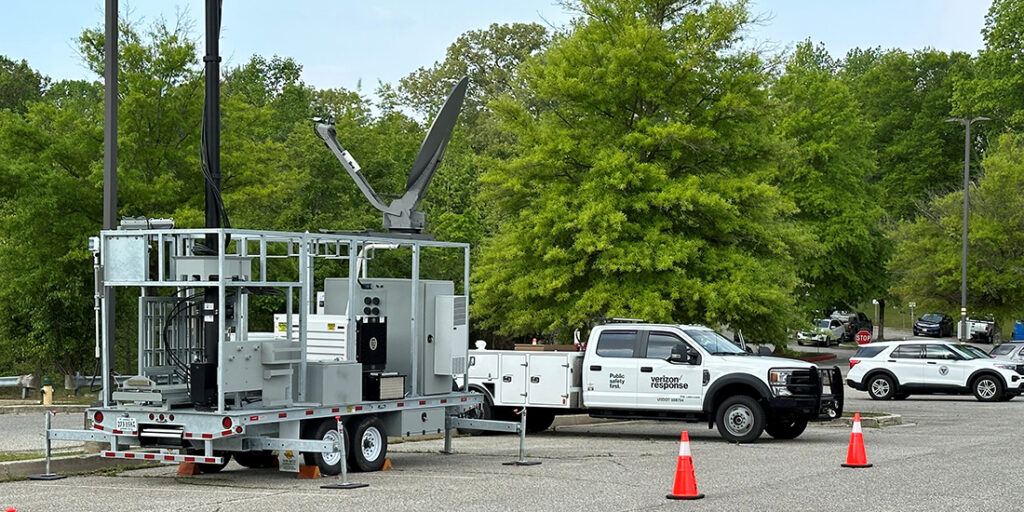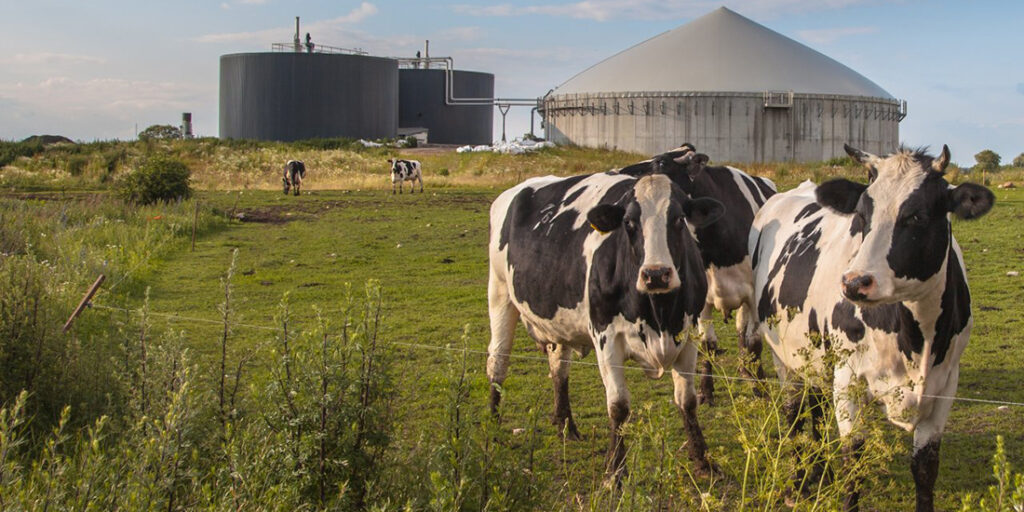SCIENCE & TECHNOLOGY

From Today to Tomorrow: The Emergency Operations Center of the Future
- Nick Betzsold and Grant Tietje
The next-generation EOC, which implements cutting-edge technology and AI, does not promise perfect disaster management, but it does mean responders at all levels will have better situational awareness, plan more efficiently, and act faster.
Most Recent

Bridging Communication Gaps: Lessons from Hurricane Helene
Greg Hauser
April 30, 2025
Hurricanes in 2024 caused widespread damage to infrastructure, leading to a critical but often overlooked issue: isolation. Physical and technological disruptions left public safety personnel and government officials unable to perform essential tasks. While physical destruction was visible, the invisible breakdown of communication systems intensified the sense of isolation and

Connectivity: The Foundation of Disaster Response and Preparedness
Cory Davis
April 30, 2025
In an era of increasingly frequent and severe weather events, the demands on first responders have never been greater. To navigate high-stakes, rapidly evolving situations, reliable connectivity and cutting-edge technology are essential. A fast, secure, and resilient communications network is the backbone of any effective disaster response.

Emergency Alerts: The Missing Link
Rodrigo (Roddy) Moscoso
April 23, 2025
As satellite-to-cell technology grows more common, cell phone makers must move quickly to adopt it. This link can bridge emergency services and the public, no matter the disaster or condition of ground networks. Learn how real-time satellite communication saves lives by offering vital access for users and first responders.

A Regional Approach to Public Safety Communications Planning
Charles (Charley) Bryson
April 16, 2025
Despite significant investments in public safety, critical training gaps for first responders persist. Regional planning committees, established by the FCC in the 1980s to manage public safety radio frequencies, remain key to improving interoperability. Learn about ongoing efforts—both regional and national—to close communication gaps and improve coordinated emergency response.
SCIENCE & TECHNOLOGY Archives
Agroterrorism: A Persistent but Overlooked Threat
Dan Scherr and Tanya M. Scherr
March 19, 2025
Agroterrorism is not new. Considered a subset of bioterrorism, it has become an increasing concern to the U.S. With so much of the agriculture sector
Cost Analysis: Protecting the Grid and Electronics from an EMP
The Foundation for Infrastructure Resilience
March 12, 2025
Because modern societies are increasingly reliant on electronics, they are more vulnerable to the effects of an electromagnetic pulse event. As nations move to electrify
Beyond the Showcase: Strengthening Biosecurity at Livestock Exhibitions
Joshua Dise
March 5, 2025
Hazards and risks associated with state and local fairs mirror those of other high-attendance events—medical emergencies, mass casualty incidents, and other public safety risks. However,
The Human Factor in Cybersecurity Events: Critical Education Components
Dan Scherr and Tanya M. Scherr
March 5, 2025
When considering cyberattack risk, understanding the primacy of the human factor is central in developing plans for continuity of operations and incident response. With the
The Forefront of Innovation in Training & Exercises: Disaster Gaming
Arthur J. Simental
February 12, 2025
Disaster wargaming may significantly change the future of tabletop exercises in emergency management and homeland security. Long used effectively to win and prevent wars throughout
Keeping Humans in the Loop: The Future of Emergency Management
Justin Kates and Emily Martuscello
February 5, 2025
The emergence of powerful artificial intelligence tools generates excitement and apprehension, raising profound questions about the future of emergency response. By adopting the joint cognitive
Follow Us
Get Instant Access
Subscribe today to Domestic Preparedness and get real-world insights for safer communities.
SCIENCE & TECHNOLOGY
Most Recent

A Systems Thinking Approach to Improving Emergency Communications
William Chapman
April 16, 2025
“PACE” planning helps organizations fail gracefully, but systems thinking reduces the likelihood of failure altogether. Combining both approaches helps organizations

AI Software in 911 Dispatch Centers: An Innovative Solution
Tanya M. Scherr
April 2, 2025
Coupled with continued staffing challenges, mental health and work-life balance difficulties in emergency call centers are cause for concern. By

Agriculture Security: Systems-Based Preparedness
Joshua Dise and Adrian Self
March 26, 2025
As economies and populations grow, the food and agricultural security is of increasing concern. This demands proactive investment in risk

Farm to Power: New Hazards in Rural Communities
Russ Kane
March 26, 2025
In the interest of reducing methane pollution and establishing a revenue stream for a renewable resource, dairy and livestock operators
SCIENCE & TECHNOLOGY Archives
The Role of AI in Meeting a Great Emergency Management Challenge
Douglas Yeung and Aaron Clark-Ginsberg
December 26, 2024
AI’s ability to ingest and synthesize data on hazards and vulnerabilities could prove invaluable in addressing one of the biggest long-standing challenges of emergency management:
Introducing AI to the Emergency Management Workforce: A Case Study
Lenora G. Borchardt
December 18, 2024
AI can contribute to professional competency and learners’ success while efficiently training emergency management professionals and managing the bottom line.
Opportunities for Artificial Intelligence in Emergency Management
Alex Hagen and Jonathan (Jon) Barr
December 18, 2024
Recent research into the relationship between AI and emergency management uncovered an environment prepared for AI-based solutions. While AI must overcome some infrastructure hurdles, technologies
Emergency Management of Tomorrow: Emerging Technologies and Concepts
Dan Cotter, Christina Bapst-Stump, Ann Lesperance and Rachel A. Bartholomew
December 11, 2024
More frequent and intense disasters put pressure on emergency managers and emergency operations centers to share and analyze data faster than ever before and with
Protecting Critical Infrastructure From Weaponized Drones
David Winks, Steve Chill, Frederick Ferrer, Michael J. "Apollo" Lovell, Mike Swearingen and Mary Lasky
December 4, 2024
Electricity substations are traditionally only protected by chain link fences and signage warning of the dangers of high voltage. However, this still leaves property vulnerable,
Why Messaging Matters: A Regionalized Approach to Alerts and Warnings
Soraya Sutherlin
November 27, 2024
Effective, timely, and unified communication across jurisdictions is essential for saving lives. The 2015 ExxonMobil refinery explosion highlighted the urgent need for coordinated, cross-jurisdictional alerting.
Follow Us
Get Instant Access
Subscribe today to Domestic Preparedness and get real-world insights for safer communities.


